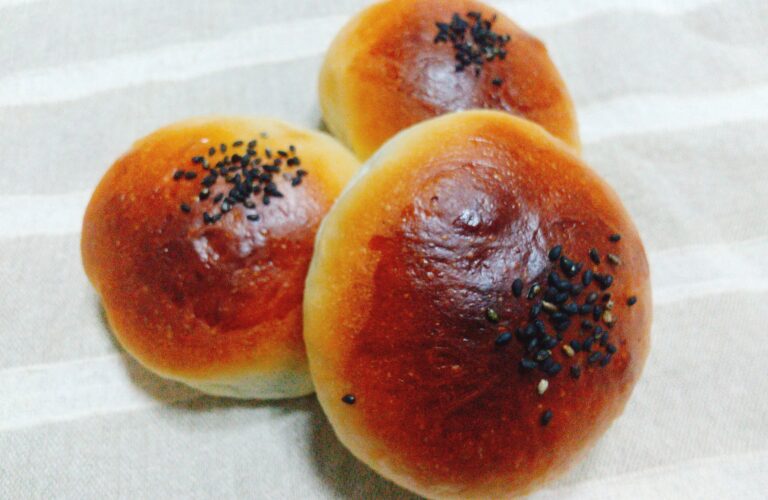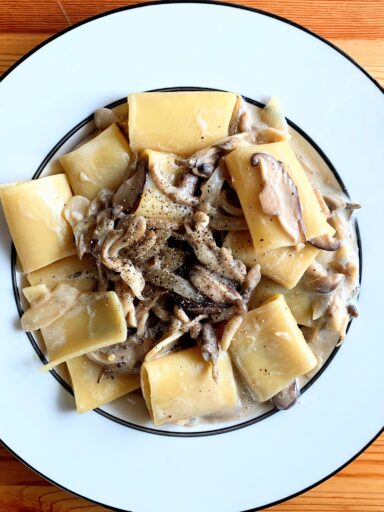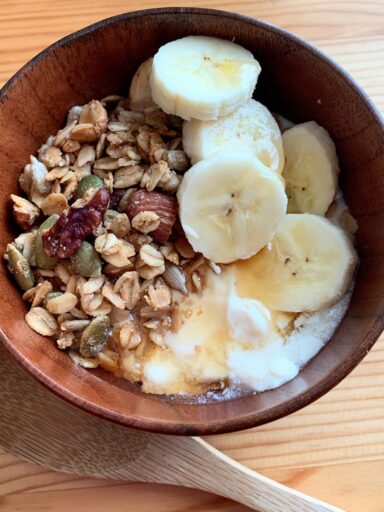I would say Anpan is one of the most popular pastries in Japan. It is impossible to grow up in Japan without eating or seeing this sweet red bean paste filled bun. If you visit Japan and want to try one of those, finding them is so easy, you don’t even have to look for a bakery, Anpan are literally everywhere! You can see how Anpan is commom and popular for us
What is Anpan?
The name Anpan means a bread filled with Anko which is sweetened red bean paste. We Japanese use the word “pan” to refer to all kinds of breads and pastries, Anpan is made with enriched dough which normally uses eggs, milk, and butter.
Anpan is invented by Kimura Yasubei who had been a former samurai before the government of Japan abolished the samurai class. After he lost his status, he decided to open a bakery named “Kimuraya” in Tokyo and he wanted to create a new type of bread for Japanese people because bread and pastries were not everyday food and not so popular to eat in Japan in those days. Anko has been the most popular filling in Japanese sweets and people at the time loved it as much as we do. One day he came up with the idea of filling a bun with Anko and “Anpan” was born! The popularity of Anpan grew up fast and the bun became the most iconic Japanese pastry now. Kimuraya has been making and selling Anpan for over 150 years.
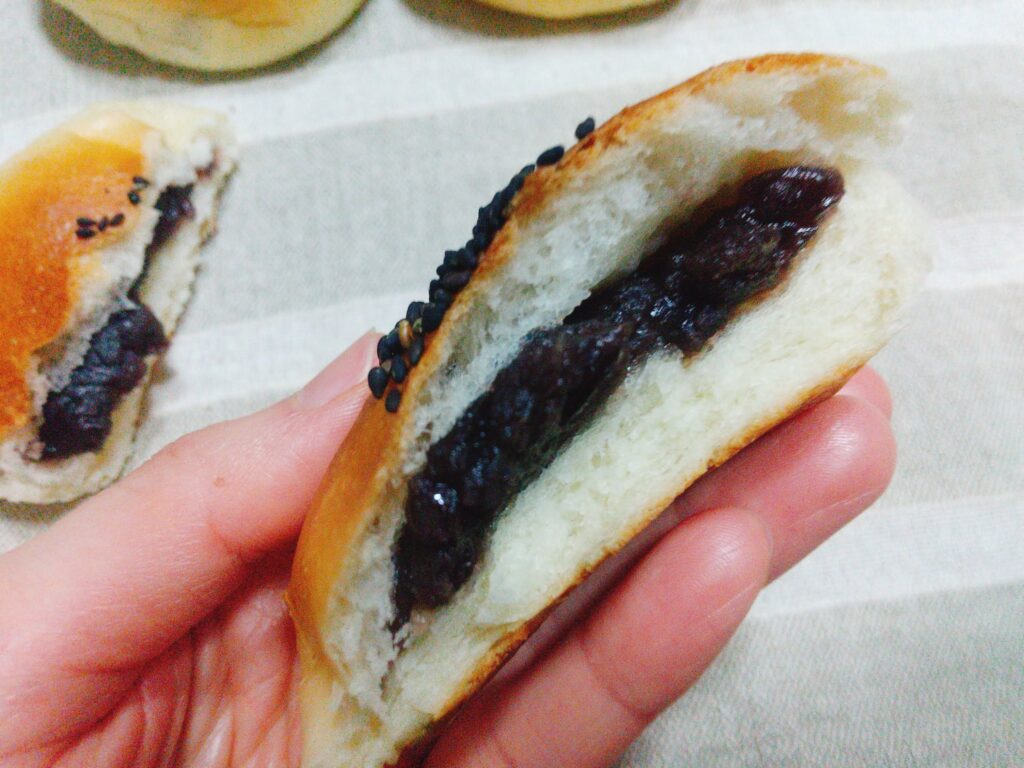
What is Tangzhong?
Tangzhong(湯種) is made by combining some hot water and about 30% of the flour in the recipe to gelatinize the gluten of the flour. This method makes baked goods keep soft and fresh for longer than a standard method. Now, making bread with Tangzhong is widely used in many countries, especially in Korea, Taiwan, and “Japan” where Tangzhong is invented. In Japan, Tangzhong is pronounced as “Yudane” and I don’t know why people outside Japan use the word Tangzhong, not Yudane to describe the roux.
This is the consistency of Tangzhong (Yudane). It’s almost like a choux pastry.
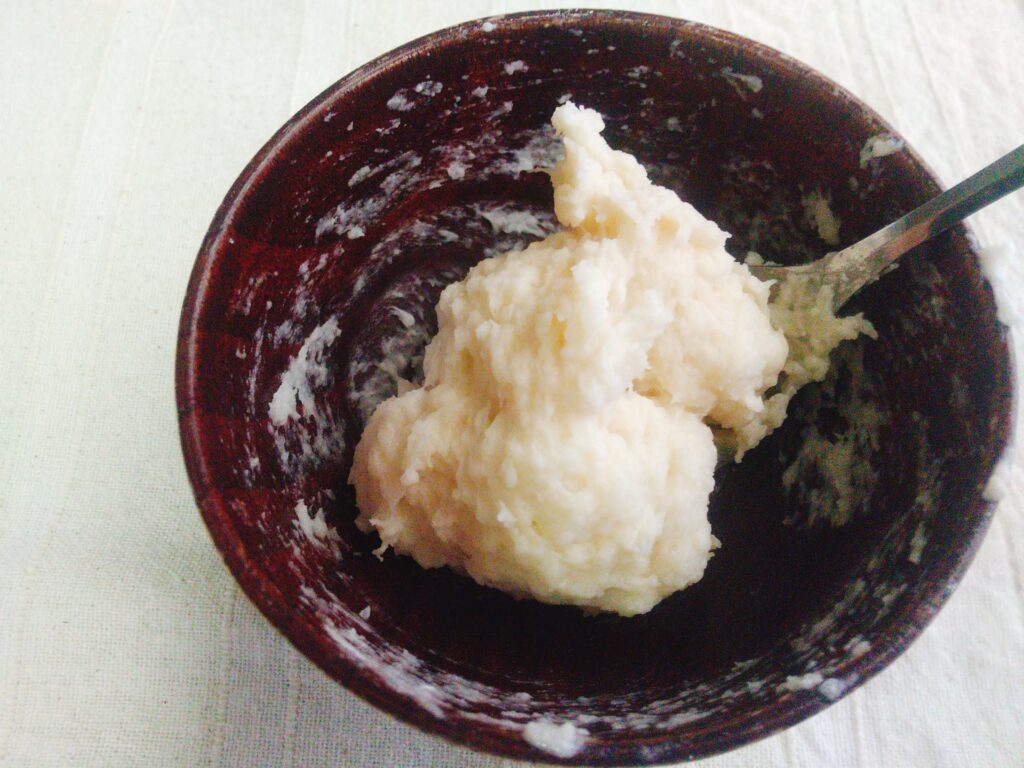
How is this Anpan vegan and still good?
Anpan is ususally made with an enriched dough which uses eggs, milk and butter to make the pastry soft in texture and rich in taste. But, I really didn’t want to use animal products in my pastries just to keep them soft for longer or richer, and then I came across the method called “Yudane” which I learned later to be pronounced as Tangzhong in Chinese. You can make enriched dough without eggs and replace plant based milk and vegan butter for cow milk and butter.
Ingredients you will need
Anko – This is the most important ingredient in Anpan. You can simply buy storebought Anko, but I have the best and easy recipe for Anko, just click the link below!
How to make Anko (Sweet Red Bean Paste)
Bread Flour – You can use plain flour if you want, but the texture would be diefferent.
Boiling Water – Hot water has to be over 80C in this recipe, otherwise you can’t get your flour completely gelatinized and make the proper Tangzhong.
Sugar – Sugar is important, not only for sweetness but also for texture. Any kind of sugar is fine.
Salt – Salt enhances the flavour and a pinch of salt makes a big difference!
Yeast – I use active dry yeast in my Anpan, but you can use fresh yeast, if you like.
Plant Based Milk – I recommend using “Soy milk” because it’s richer in protein than most plant based milk, but it’s up to you.
Vegan Butter – Vegan butter or vegetable shortning are best, but flavourless oil can substitute for them. If you want to replace butter with oil, use 15 milliliters of oil in Anpan.
Sesame Seeds -In Japan, sesasme seeds or poppy seeds are traditional topping for Anpan.
How to store Anpan to keep them soft for long
After you take Anpan out of your oven, cool them on a wire rack for at least 30 min, then put them in an airtight container or a freezer bag to keep them soft and moist.
They can last for 2 or 3 days at room temperture and up to 1 months in freezer.
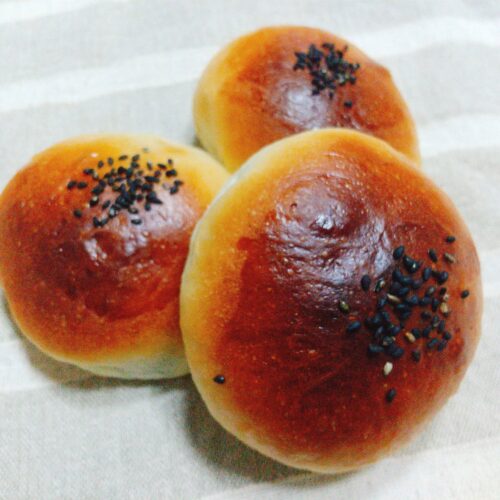
Vegan Tangzhong Anpan( Japanese Red Bean Buns )
Equipment
- 1 bowl ( or a stand mixer )
Ingredients
For Tangzhong
- 50 g Bread flour
- 70 ml Boiling water ( over 80C )
For the Dough
- 150 g Bread flour
- 25 g Sugar ( Any kind of sugar is fine )
- ½ tsp Salt
- ¾ tsp Active dry yeast
- 50 ml Water (lukewarm)
- 50 ml Plant based milk (lukewarm) ( or you can use just 100ml water )
- 20 g Vegan butter or Vegetable shortning ( softened )
For the Filling
- 280 g Anko
Topping
- some Sesame seeds
Instructions
For Tangzhong
- Put flour and boiling water in a bowl and make a paste. Cover clingfilm directly on top of the paste or wrap the paste with clingfilm and cill it in fridge for overnight or at least 6 hours. Take your Tangzhong from fridge 1 hour before making the dough to make it room temperature.
For the Dough
- In a large bowl, put all dry ingredients. Make sure not to put salt next to yeast as it kills the yeast. Pour over wet ingredients and combine the mixture and knead it on a surface until the dough become shiny and elastic. If you're using a stand mixer, beat the dough until it comes away from the bowl.
- Once your dough become shiny and elastic, add your Tangzhong and knead more making sure to mix the dough and Tangzhong completely. Then, add the butter and knead until all the butter is combined and the the dough becomes smooth . Put the dough back in a bowl and cover it with a damp towel and let it proof at room temperature until the dough becomes double in size. It takes for about 1 hour, but it really depends on the temperature of your room, so always check it by eye, not by time.
- Punch the dough to deflate and turn the dough on the floured surface. Devide it into 8 pieces and shape them into balls. Let them sit for 15 min. Flatten them with your hand or a rolling pin into disc shape to fill Anko. You want to make the edge of the dough thinner and thicker at middle, otherwise your Anpan will have thick bottom and paper thin top. Put 35g of Anko on each dough and wrap it pnch the bottom to seal and do the same to all pieces and put them on a tray to do the second proof.
- Preheat your oven at 200C (392F)Cover them with a damp towel loosely and leave them at room temperature until they become plump. To check if they're ready, just push the side of a bun with your forefinger, if it springs back immidiately, it's not ready. Your fingermark remains on the surface of your dough, they're ready to bake.
- Sprinkle some sesame seeds on top of the buns and bake them in the oven for 12 to 15 minutes. If your buns are getting too much brown on top before the bottom are fully cooked, cover them with a piece of aluminium foil to prevent from burning. Cool on a wire rack for 15 to 20 minutes before eating.

